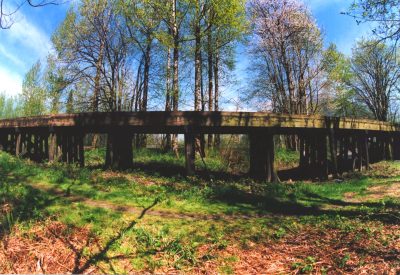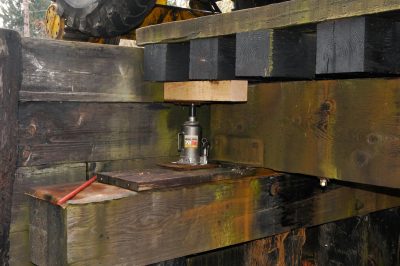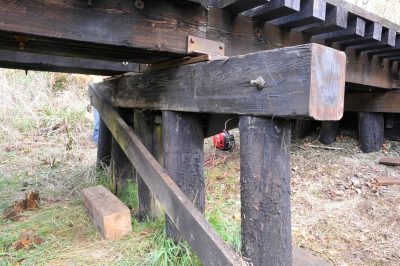 Bridges are vitally important to railroads. They allow trains to cross rivers and gullies, swamps and streams, roads and highways, and sometimes other railroads, too. It was evolving bridge technology that allowed steel bridges to be built in remote areas of the west, and for the train and locomotive mass to rise dramatically.
Bridges are vitally important to railroads. They allow trains to cross rivers and gullies, swamps and streams, roads and highways, and sometimes other railroads, too. It was evolving bridge technology that allowed steel bridges to be built in remote areas of the west, and for the train and locomotive mass to rise dramatically.
Railroad bridges are different than other kinds of bridges because they are subjected to unique dynamic forces. An interesting historical fact is that even today railroad bridges are designed using the Coopers loading system, a system developed in 1894 and based on the loading of two consolidation-type steam locomotives.
The Northwest Railway Museum has a collection of bridges representative of those that transformed the west. Timber trestles, open and ballasted decks, a pin connected truss and even a voided-slab concrete span are all critical structures on the Museum’s railroad. All these structures are inspected annually by an independent railroad bridge inspector, and periodically by Museum staff.
During bridge inspections components are inspected and rated. Elements that remain effective but show any signs of deterioration are placed on a watch list. On each subsequent inspection, the “watch” parts can be closely examined, and an informed decision can be made about when to replace a part.

To change a cap, the stringers and bridge deck are jacked and supported from adjacent pile caps. This removes the weight from the affected cap and allows it to be changed.
During the 2013 inspection, two pile caps were identified for replacement. Caps are large timbers that sit on top of the piles and support the stringers, the long beams that run from one pile cap to the next and support the deck. The inspection team estimated that they each had less than two years of life remaining. So in Fall 2013, two recycled old growth timber caps each 14 inches by 15.5 inches and 14 feet long were purchased from a dealer and installed. Each cap took approximately 7 hours to exchange, and work was completed without delay or incident.


